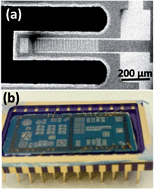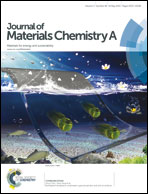The effect of poling conditions on the performance of piezoelectric energy harvesters fabricated by wet chemistry†
Abstract
The effect of poling conditions on the power output of piezoelectric energy harvesters using sol–gel based Pb(Zr0.53,Ti0.47)O3–Pb(Zn1/3,Nb2/3)O3 piezoelectric thin-films has been investigated. A strong correlation was established between the poling efficiency and harvester output. A method based on simple capacitance–voltage measurements is shown to be an effective approach to estimate the power output of harvesters poled under different conditions. The poling process was found to be thermally activated with an activation energy of 0.12 eV, and the optimum poling conditions were identified (200 kV cm−1, 250 °C for 50 min). The voltage output and power density obtained under optimum poling conditions were measured to be 558 V cm−2 and 325 μW cm−2, respectively.


 Please wait while we load your content...
Please wait while we load your content...